
176
PERMA: SCOPING AND ADDRESSING THE PROBLEM OF
LINK AND REFERENCE ROT IN LEGAL CITATIONS
Jonathan Zittrain, Kendra Albert, and Lawrence Lessig
∗
I
NTRODUCTION
Works of scholarship have long cited primary sources or academic
works to provide sources for facts, to incorporate previous scholarship,
and to bolster arguments. The ideal citation connects an interested
reader to what the author references, making it easy to track down,
verify, and learn more from the indicated sources.
In principle, as cited sources move to the Web, this linking should
become easier. Rather than requiring a reader to travel to a library to
follow the sources cited by an author, the reader should be able to re-
trieve the cited material immediately with a single click.
But again, only in principle. The link, a URL, points to a resource
hosted by a third party. That resource will only survive so as long as
the third party preserves it. And as websites evolve, not all third par-
ties will have a sufficient interest in preserving the links that provide
backwards compatibility to those who relied upon those links. The
author of the cited source may decide the argument in the source was
mistaken and take it down. The website owner may decide to aban-
don one mode of organizing material for another. Or the organization
providing the source material may change its views and “update” the
original source to reflect its evolving views. In each case, the citing
paper is vulnerable to footnotes that no longer support its claims. This
vulnerability threatens the integrity of the resulting scholarship.
This problem does not exist for printed sources, or at least not in
the same way. Print sources can be kept indefinitely by libraries or ar-
chives, assuming space and other determinations allow. The ability to
update those original print sources is, for these purposes, happily diffi-
cult. Tracking down every original copy of an edition of a printed
New York Times and changing a story on page A4 is the stuff of
–––––––––––––––––––––––––––––––––––––––––––––––––––––––––––––
∗
Jonathan Zittrain is Professor of Law at Harvard Law School and the Kennedy School of
Government, and Professor of Computer Science at the Harvard School of Engineering and Ap-
plied Sciences. Kendra Albert is a JD candidate at Harvard Law School. Lawrence Lessig is the
Roy L. Furman Professor of Law and Leadership at Harvard Law School, and Director of the
Edmond J. Safra Center for Ethics at Harvard University. We thank research assistants Nicholas
Fazzio, Benjamin Sobel, Leonid Grinberg, and Shailin Thomas for their work, Constantine
Boussalis for statistical assistance, and Raizel Liebler and Martin Klein for their helpful feedback.
The authors recognize the efforts of the Harvard Law School Library Innovation Lab, in particu-
lar Kim Dulin, Matthew Phillips, Annie Cain, and Jeff Goldenson, in taking Perma from idea to
reality.

2014] PERMA 177
Orwell’s imagination, not real-world practicality. But to do the same
thing with an online edition is trivial.
As newspapers, government agencies and other non-academic
sources move to primarily digital publication, law review articles in-
creasingly reference online materials, sometimes in lieu of, or in addi-
tion to, a print source.
1
When online material does not have a formal
paper counterpart such as a published book or journal article, there
are few repositories that keep copies of the linked material from cita-
tions. Instead, linked material remains in the custody of its single host,
rather than being distributed among libraries or readers.
Because of this, materials at links frequently (1) become inaccessi-
ble or (2) change, a phenomenon known as “link rot” and “reference
rot,” respectively. Link rot refers to the URL no longer serving up any
content at all. Reference rot, an even larger phenomenon, happens
when a link still works but the information referenced by the citation
is no longer present, or has changed.
2
Building on previous studies of link rot,
3
we have reviewed links
published within three legal journals — the Harvard Law Review
(HLR), the Harvard Journal of Law and Technology (JOLT) and the
Harvard Human Rights Journal (HRJ) — as well as the links con-
tained across all published United States Supreme Court opinions. We
exploited the unique citation style of law reviews and court opinions,
including the extensive cite-checking process, which meant that in al-
most all cases, we were able to determine whether the original infor-
mation was present. Thus, our study was able to validate previous
findings of link rot in law review and Supreme Court citations, as well
–––––––––––––––––––––––––––––––––––––––––––––––––––––––––––––
1
For example, The Bluebook style guide for legal citation says: “The Bluebook requires the
use and citation of traditional printed sources when available, unless there is a digital copy of the
source available that is authenticated . . . .” T
HE
B
LUEBOOK
: A U
NIFORM
S
YSTEM
OF
C
ITATION
R.
18
.
2
, at
165 (Columbia Law Review Ass’n et al. eds., 19th ed. 2010).
2
The Hiberlink and Memento project team at Los Alamos National Lab helpfully distin-
guishes between the two phenomena — a useful distinction that we import. See Robert Sander-
son, Mark Phillips, & Herbert Van de Sompel, Analyzing the Persistence of Referenced Web Re-
sources with Memento,
AR
X
IV
(May 17, 2011, 7:21 PM), http://arxiv.org/abs/1105.3459, archived
at http://perma.cc/0ee5QbGfp5F.
3
E.g., Helane E. Davis, Keeping Validity in Cite: Web Resources Cited in Select Washington
Law Reviews, 2001–03, 98 L
AW
L
IBR
. J. 639 (2006); Raizel Liebler & June Liebert, Something
Rotten in the State of Legal Citation: The Life Span of a United States Supreme Court Citation
Containing an Internet Link (1996–2010), 15 Y
ALE
J.L. & T
ECH
. 273 (2013); Mary Rumsey, Run-
away Train: Problems of Permanence, Accessibility, and Stability in the Use of Web Sources in
Law Review Citations, 94 L
AW
L
IBR
. J. 27 (2002); Wallace Koehler, A Longitudinal Study of Web
Pages Continued: A Consideration of Document Persistence, 9 I
NFORMATION
R
ESEARCH
, (Jan.
2004), http://informationr.net/ir/9-2/paper174.html, archived at http://perma.cc/8767-F7NG; John
Markwell & David W. Brooks, “Link Rot” Limits the Usefulness of Web-based Educational Mate-
rials in Biochemistry and Molecular Biology, 31 B
IOCHEMISTRY
&
M
OLECULAR
B
IOLOGY
E
DUC
. 69 (2003), available at http://onlinelibrary.wiley.com/doi/10.1002/bmb.2003.494031010165/
full, archived at http://perma.cc/N969-86A4.

178 HARVARD LAW REVIEW FORUM [Vol. 127:176
as provide an estimate of how many said citations were affected by
reference rot.
We documented a serious problem of reference rot: more than 70%
of the URLs within the above mentioned journals, and 50% of the
URLs within U.S. Supreme Court opinions suffer reference rot —
meaning, again, that they do not produce the information originally
cited.
Given both of these problems, in this paper we propose a solution
for authors and editors of new scholarship that will secure the long-
term integrity of cited sources by involving libraries in a distributed,
long-term preservation of link contents.
Perma.cc, developed by the Harvard Library Innovation Lab, is a
caching solution to be used by authors and journal editors in order to
integrate the preservation of cited material with the act of citation.
Upon direction from a paper author or editor, Perma will retrieve and
save the contents of a webpage, and return a permanent link. When
the work is published, the author can include that permanent citation
in addition to a citation to the original URL, or just the permanent
link, ensuring that even if the original is no longer available because
the site goes down or changes, the cache is preserved and available.
Other services have offered permanent citations before.
4
But those
services themselves become vulnerabilities within a citation system if
their own long-term viability is not assured. Perma mitigates this vul-
nerability by distributing the Perma caches, architecture, and govern-
ance structure to libraries across the world. Thus, so long as any li-
brary or successor within the system survives, the links within the
Perma architecture will remain.
P
REVIOUS
W
ORK
Much of the previous research on link rot was done in the early
2000s as citation of online materials rapidly increased. In 2002, Pro-
fessor Mary Rumsey studied citations in legal materials, and concluded
that as the citation of URLs was increasing, so too was link rot.
5
At
the time of her 2002 study she found a steady decrease in working
links, with 61% of links from articles published in the previous year
working, to only 30% working from five years earlier.
6
Other studies, including by Professor Wallace Koehler from 2004,
and by Professors John Markwell and David Brooks from 2006, are
consistent with Rumsey’s results, but apply to other domains: general
–––––––––––––––––––––––––––––––––––––––––––––––––––––––––––––
4
W
EB
C
ITE
, http://www.webcitation.org, archived at http://perma.cc/0p7xfMNg8Kf.
5
Rumsey, supra note 3, at 32, 34–35.
6
Id. at 35. Rumsey defines working links as links that take a viewer to the document or take
a viewer to a list where the document appears. Id. at 31.

2014] PERMA 179
webpages and biochemistry, respectively.
7
More recent work, includ-
ing that of the Chesapeake Digital Preservation Group (CDPG) and
Raizel Liebler and June Liebert’s study of Supreme Court citations,
recently published in the Yale Journal of Law and Technology, have
concluded that link rot remains a significant problem.
8
The CDPG has taken another approach to the study of link rot,
while also taking important steps to preserve online resources.
9
The
CDPG does not seek to evaluate the link rot of a specific set of cita-
tions. Rather, since 2007, the CDPG has been caching documents that
it anticipates might be used as legal resources, specifically for the pur-
poses of studying link rot.
10
Librarians associated with the CDPG se-
lect resources that they believe are worth collecting, and save a copy of
those resources on their servers.
11
When conducting their link rot re-
search, the team then compares the pages currently hosted at a URL
with the cached copy.
12
The CDPG’s work is the most conclusive of the studies reviewed,
due to its caching and comparison of digital resources. In its 2013 re-
port, the CDPG found that 44% of the URLs from its original data set,
including content collected between 2007 and 2008, no longer
worked.
13
The report does not mention whether a percentage of the
links underwent reference rot — the content changing but the URL
still resolving correctly. The CDPG also found that link rot in the
sample was increasing over time.
14
It may be difficult, however, to generalize the Chesapeake findings
to more general legal citations, or to scholarship more broadly. The
material captured by Chesapeake is specifically selected by archivists
and librarians based on continuing relevance to legal scholarship. For
example, Chesapeake’s preserved documents include prepared pam-
phlets on government employee health insurance, a Soros report on
HIV transmission criminalization, and a 1940 statement on principles
–––––––––––––––––––––––––––––––––––––––––––––––––––––––––––––
7
Koehler, supra note 3; Markwell & Brooks, supra note 3, at 70–71.
8
“Link Rot” and Legal Resources on the Web: A 2013 Analysis, C
HESAPEAKE
D
IGITAL
P
RESERVATION
G
ROUP
(2013), http://cdm16064.contentdm.oclc.org/ui/custom/default/
collection/default/resources/custompages/reportsandpublications/2013LinkRotReport.pdf (last vis-
ited Feb. 26, 2014); Liebler & Liebert, supra note 3, at 297–99.
9
Overview, C
HESAPEAKE
D
IGITAL
P
RESERVATION
G
ROUP
,
http://cdm16064.contentdm.oclc.org/cdm/about#overview (last visited Feb. 26, 2014), archived at
http://perma.cc/0L5yFmvwjaS; see also Sarah Rhodes, Breaking Down Link Rot: The Chesapeake
Project Legal Information Archive’s Examination of URL Stability, 102 L
AW
L
IBR
. J. 581 (2010).
10
Rhodes, supra note 9, at 582.
11
Id.
12
Id.
13
“Link Rot” and Legal Resources on the Web: A 2013 Analysis, supra note 8.
14
Id.

180 HARVARD LAW REVIEW FORUM [Vol. 127:176
of academic freedom.
15
The materials cited in legal scholarship, on the
other hand, may more typically reference popular media sources or in-
dividual webpages. But independent of the collection style, the
CDPG’s finding that
over 50% of links to websites with government
domains such as .gov and .mil no longer work does not bode well for
citations to U.S. government websites.
16
The work that most closely resembles our model is Liebler and
Liebert’s recently published study, which found that 29% of links cited
in decisions of the Supreme Court of the United States from 1996–2010
were “invalid.”
17
As we will describe, our own tests of Supreme Court
links revealed a much higher percentage of reference rot — 50%. The
discrepancy is tied to three factors.
18
First, we count both link rot and reference rot, while Liebler and
Liebert count link rot only. Their method recorded the frequency with
which a link returned an error page. We took the additional step of
measuring reference rot, by manually examining apparently successful
links to determine whether they produced their original sources.
19
Second, time has elapsed since Liebler and Liebert tested their
links, and even a few months can result in an increase in link rot.
And third, we included two more Supreme Court terms in our data
set (OT 2010 and OT 2011).
O
UR
W
ORK
The threshold question of our work echoes Rumsey’s: Are online ci-
tations in law reviews serving their intended purpose — to permit an
interested reader to access the material cited in the journal?
Our answer is the same, but more conclusive: No. O
f
our
spot
-
checked
sample
,
only
29.9%
of
the
HRJ
links
, 26.8%
of
the
HLR
links
,
and
34.2%
of
the
JOLT
links
contained
the
material
cited
due
to
link
or
reference
rot
. W
e
have
no
reason
to
expect
that
other
journals
are
any
different
.
The links we evaluated in this study are to the open Web — that
part of the Web that is accessible without paywalls or other restriction.
Therefore, we did not check links to closed-access websites requiring
passwords, such as references to well-known legal resources such as
LexisNexis or Westlaw. The citation practices of the three journals we
–––––––––––––––––––––––––––––––––––––––––––––––––––––––––––––
15
All Collections, C
HESAPEAKE
D
IGITAL
P
RESERVATION
G
ROUP
,
http://cdm16064.contentdm.oclc.org/cdm/search/collection (last visited Feb. 26, 2014), archived at
http://perma.cc/0SvYRpDG26n.
16
See “Link Rot” and Legal Resources on the Web: A 2013 Analysis, supra note 8.
17
Liebler & Liebert, supra note 3, at 298.
18
One less important additional factor is that our work was limited to resources available on
the open Internet, whereas the Liebler and Liebert work was interested in citation more generally.
19
Liebler & Liebert, supra note 3, at 294.

2014] PERMA 181
tested are consistent with this research goal. At the time we tested the
links, all three journals cited hard-copy versions of sources, such as
cases published in reporters, and journal articles using the Bluebook-
approved method of citation by volume number and printed pagina-
tion.
20
These citations of formal sources tend to omit URLs, anticipat-
ing that, inconvenience aside, readers can access the source in its
printed version, or through an online resource, such as LexisNexis or
Westlaw.
21
Therefore, the “available at” URLs within these journals
tend to link to public news articles, government documents, or other
works not systematically available in print. Some also link directly to
websites as proof of the matter asserted — for example, citing to a
corporate home page or history for information about a corporation
not available from a scholarly source.
22
Because our study involved a more extensive two-step review (first
validating the links, and then for valid links, verifying the material
cited is what was originally intended), we were able to consider a more
general question about link rot: how comprehensive are HTTP status
codes for predicting whether a given webpage is still working? Can
such codes be used to successfully evaluate whether a linked source
has evaporated?
HTTP status codes are sent from the webpage’s server to a brows-
er that attempts to navigate to a page. The most popularly known is
404, or “not found,” but there are a number of others. For example, a
200 means that the server returned a page as expected, and a 503 indi-
cates that the service is unavailable.
23
Status codes are easy to check
in an automated fashion, so a successful attempt at pairing error codes
with content or establishing a baseline understanding of error codes
versus link rot could assist in future studies.
–––––––––––––––––––––––––––––––––––––––––––––––––––––––––––––
20
See the article submission policies of each of the journals: Submissions, H
ARV
. L. R
EV
.,
http://www.harvardlawreview.org/submissions.php (last visited Feb. 26, 2014), archived at
http://perma.cc/42FG-NGWE; Submissions, H
ARV
. H
UM
. R
TS
. J., http://harvardhrj.com/about
/submissions (last visited Feb. 26, 2014), archived at http://perma.cc/8EAA-U5UH; Submissions,
H
ARV
. J.L. & T
ECH
., http://jolt.law.harvard.edu/submissions (last visited Feb. 26, 2014), archived
at http://perma.cc/JVM5-WCMD.
21
See, e.g., T
HE
B
LUEBOOK
: A U
NIFORM
S
YSTEM
OF
C
ITATION
R. 16, at 146 (Columbia
Law Review Ass’n et al. eds., 19th ed. 2010).
22
At the time that we pulled data, the HLR did not include URLs for sources that were acces-
sible in print, like New York Times articles. JOLT uses parallel citations to print available
sources, as does HRJ.
23
Roy T. Fielding et al., Hypertext Transfer Protocol — HTTP/1.1, RFC2616, W
ORLD
W
IDE
W
EB
C
ONSORTIUM
, http://www.w3.org/Protocols/rfc2616/rfc2616-sec10.html (last visited Feb.
26, 2014), archived at http://perma.cc/QP8S-8HJN.
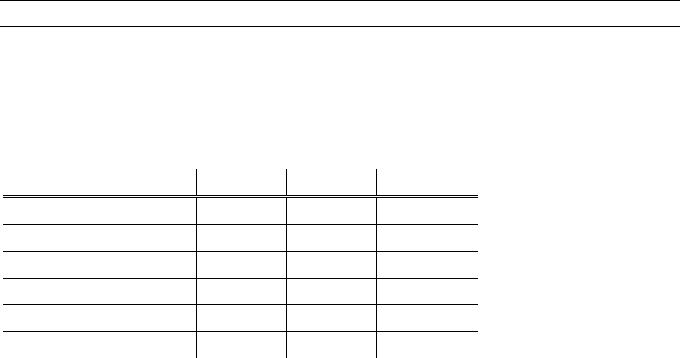
182 HARVARD LAW REVIEW FORUM [Vol. 127:176
HTTP Status HLR HRJ
J
OLT
200 (working) 350 303 348
OPEN 187 109 191
400 22 --
404 308 253 291
403 65 - 122
All other codes All All All
We found that some error codes are better than others. As ex-
pected, a complete lack of connection, or a 400 or 500 code (including
404, 503, etc.), is almost always a sign of link rot (the only exception
being if a webpage is down temporarily). However, a 200 “all clear”
signal does not mean that a source is present. A 200 can accompany a
page displaying regrets, such as a custom 404-style page deployed by a
website that does not return a 404 status (a soft 404).
24
It can also be a
redirect, such as when a website has been overhauled since the citation
and entire sets of pages have been redirected to the homepage. Of
course, the page can also have changed in content but still be served
up — this being the hardest to detect of the 200 problems and the most
difficult form of reference rot to catch. Of the 353 “200 status” links
within the Supreme Court corpus that we viewed and coded, only 76%
still led to the cited material, indicating that reference rot independent
of link rot is a major problem.
D
ETAILED
M
ETHODOLOGY
AND
D
ATA
Law Review Citations
On September 7, 2012, our team pulled all articles from the Har-
vard Law Review, Harvard Journal of Law and Technology and the
Harvard Law School Human Rights Journal, starting in 1999, 1996,
and 1997, respectively, until the summer of 2012. We isolated all of
the footnotes, and then eliminated all footnotes that did not contain
hyperlinks. Each of the hyperlinks was thus tied to a specific journal
and footnote, and each hyperlink was counted only once. We then ran
an HTTP status check as a first step to determine if the links were no
longer functional, returning an error. If the domain for the URL no
longer existed, the status checker returned a specific error (“OPEN”),
also indicating that link was not functional.
–––––––––––––––––––––––––––––––––––––––––––––––––––––––––––––
24
The term “soft 404” was explained extensively in an earlier paper on web decay. See Z
iv
B
ar
-Y
ossef
,
et
al
., S
ic
T
ransit
G
loria
T
elae
: T
owards
an
U
nderstanding
of
the
W
eb
’
s
D
ecay
,
P
ROC
. 13
TH
I
NT
’
L
C
ONF
.
ON
W
ORLD
W
IDE
W
EB
329 (2004).

2014] PERMA 183
After the HTTP status for all URLs had been coded, we selected a
sample to check by hand. We first determined the proper sample size
for a 5% margin of error for each HTTP status code. We then chose a
random sample that included enough of each type of error code for
each journal.
Each URL marked for spot-checking was loaded into a browser,
and a single research assistant checked the page contents to see if it
matched what the footnote promised. The research assistant coded the
page as working if the URL still returned the expected information,
and as not working if it did not. In most cases, the results were very
easy to determine, given the level of specificity of the footnote and the
contents of the site. However, it was impossible to truly determine in
some cases whether the cited material was still present, in which case
we tended to mark the material as not available. We did not make ef-
forts to retrieve the information if it was not immediately present —
however, some slight parsing mistakes that were introduced during the
URL collection process were fixed.
We also recorded some additional information about the pages
demonstrating reference rot by tagging them to categorize the changes
they revealed. For example, pages that redirected to the home page of
the domain were noted with a “redirect” tag, whereas pages that had
clearly been archived (via a notice in the text of the page) were noted
with an “archive” tag. The tagging process did not include all the pos-
sible variations of reference rot that could happen to linked pages, but
it did allow us to have a better understanding of what happened to
those webpages over the course of time.
Overall, we found that link rot was a large problem for all three
journals studied. From the initial status code check, only 65% of HLR
links returned a working page (indicated by a “200” code), along with
60% of HRJ links, and 67% of JOLT links. Below are tables with the
status code results from the three journals.
25
–––––––––––––––––––––––––––––––––––––––––––––––––––––––––––––
25
See Appendix 1 for a list of HTTP status code meanings. “OPEN,” which is not an HTTP
status code, means the server did not return anything.
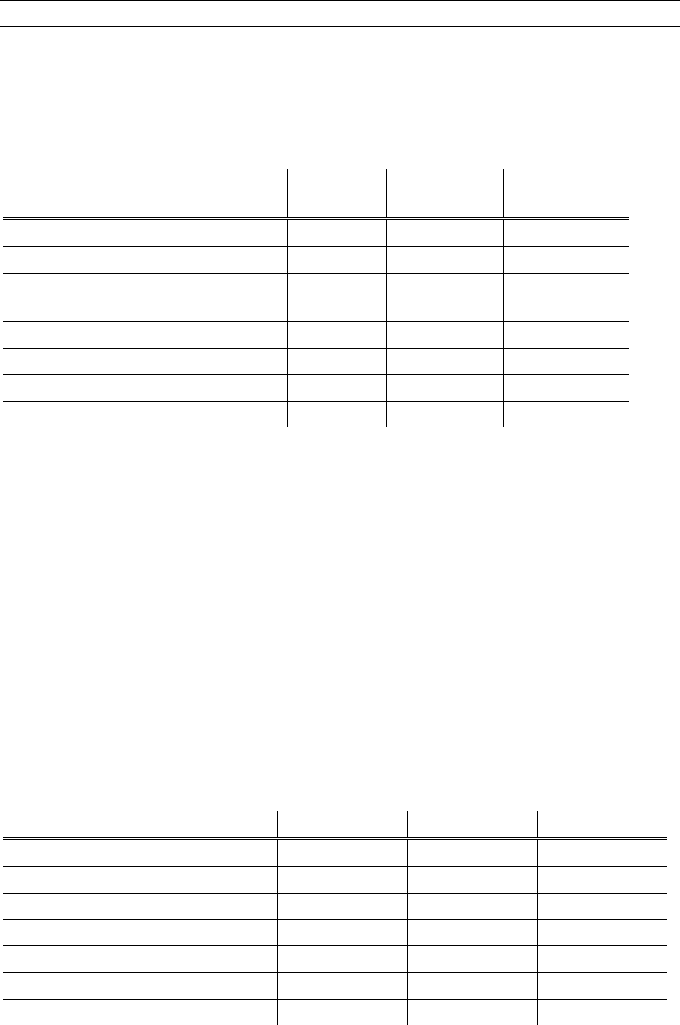
184 HARVARD LAW REVIEW FORUM [Vol. 127:176
Tag HRJ JOLT HLR
200–OK 59.9% 65.2% 66.8%
404–Not Found 31.2% 26.1% 21.9%
OPEN–No Server
Response 6.4% 6.1% 7.0%
403–Forbidden 0.9% 1.3% 3.3%
400–Bad Request 0.5% 0.4% 0.2%
500–Internal Server Error 0.5% 0.4% 0.3%
All Others 0.7% 0.5% 0.8%
Spot-checked data revealed that even pages with no link rot had
undergone reference rot. URLs that appeared to be valid (returning a
200 status code to our status checker) nonetheless frequently redirect to
another page, or were actually 404 pages that did not return the cor-
rect status in the initial check. This is just link rot in disguise. In oth-
er cases, the pages seemed fine, but did not contain the materials that
were originally cited, as in the “Working (updated)” tag, indicating ref-
erence rot.
Only 29.9% of the HRJ links, 26.8% of the HLR links, and 34.2%
of the JOLT links in our sample contained the material cited. Given
that this sample included the ~60% of 200 links, this was much lower
than expected, and significantly different from the numbers expected
based on the status codes. Below is the breakdown of the results from
the spot-check of pages that originally produced a 200 status code.
Tag HRJ
JOLT HLR
200–Working
64% 66% 68%
200–Redirect
22% 15% 14%
200–Custom 404
7% 8% 11%
200–Working (updated)
0% 8% 6%
200–Blank Page
3% 1% 0%
200–Assorted Other
4% 2% 1%
To t al
303 348 350
There was some variation in link rot/reference rot rates by journal,
although it is difficult to tell if this is because of subject material or
due to some other factor, such as publication rates or citation checking.
Of the three journals, JOLT started using hyperlinks in footnotes first.
JOLT and HLR have similar numbers of total hyperlinks; however,

2014] PERMA 185
JOLT publishes twice yearly,
26
and HLR publishes eight times per
year
27
— meaning that per issue, JOLT’s number of links is much
higher. HRJ only publishes once per year.
28
The linked materials do
not differ to significantly across subject fields, however, it may be that
technology websites or news sources of the type cited by JOLT authors
are more careful to preserve URLs then the types of sources included
in HLR or HRJ.
Consistent with previous findings, we also found that the number
of links with either reference or link rot increases with the age of the
publication. The chart below illustrates the percentage of broken links
per year (note that the 2012 data is incomplete):
–––––––––––––––––––––––––––––––––––––––––––––––––––––––––––––
26
Articles, H
ARV
. J.L. & T
ECH
., http://jolt.law.harvard.edu/articles (last visited Feb. 26, 2014),
archived at http://perma.cc/D73W-9AWB .
27
About, H
ARV
. L. R
EV
., http://www.harvardlawreview.org/about.php (last visited Feb. 26,
2014), archived at http://perma.cc/8MCP-F6PX.
28
About, H
ARV
. H
UM
. R
TS
. J., http://harvardhrj.com/about (last visited Feb. 26, 2014), ar-
chived at http://perma.cc/0QMWnM4Lhxs.
0%
10%
20%
30%
40%
50%
60%
70%
80%
90%
1996
1997
1998
1999
2000
2001
2002
2003
2004
2005
2006
2007
2008
2009
2010
2011
2012
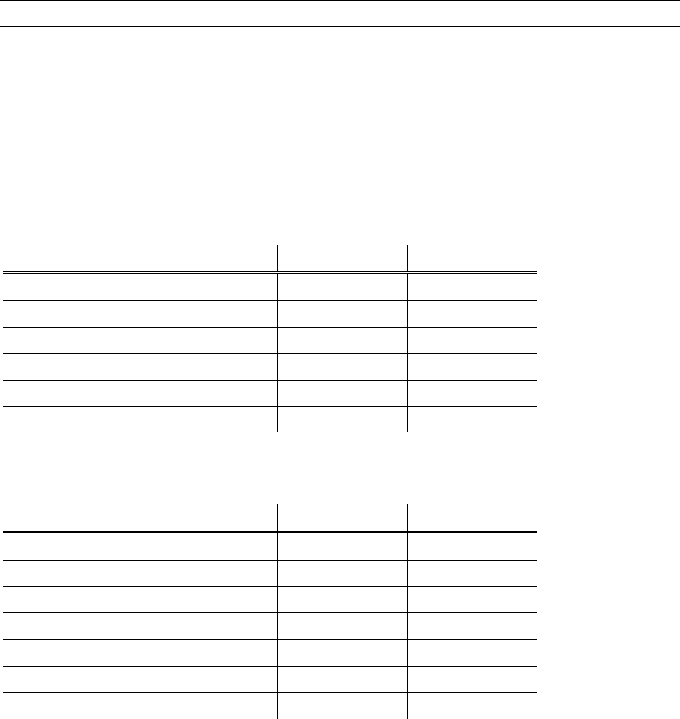
186 HARVARD LAW REVIEW FORUM [Vol. 127:176
Supreme Court Citations
SCOTUS Status Codes
Tag Count
Percent
200 353 63.6%
OPEN 56 10.1%
404 136 24.5%
403 6 1.1%
Other 4 0.7%
To t al 555
Breakdown of 200 Code URLs
Tag Count
Percent
Cited Material 277 78.5%
Redirect 32 5.8%
Blank Page 3 0.5%
Custom 404 29 5.2%
Updated 5 0.9%
Other 7 1.3%
To t al 353
On June 26, 2013, our team obtained a database of all Supreme
Court opinions from CourtListener.
29
We then found all of the URLs
in that text, first by using a regular expression search technique to
identify all links, and second, by checking the data by hand to elimi-
nate duplicates. This returned 555 hyperlinks, the first appearing in
Denver Area Educational Telecommunications Consortium, Inc. v.
FCC
30
from 1996. We checked the HTTP status for each citation,
finding that 63.6% returned a 200.
Over the following two days, our research assistants spot-checked
all links returning a 200, a refinement based on our earlier methodolo-
gy, using the original footnotes to determine the information that the
Supreme Court had intended to cite. Each link was coded by a single
research assistant.
Our finding is that 49.9% of the links cited in the Supreme Court
opinions no longer had the cited material. So again, while many of the
–––––––––––––––––––––––––––––––––––––––––––––––––––––––––––––
29
C
OURT
L
ISTENER
, https://www.courtlistener.com (last visited Feb. 26, 2013), archived at
http://perma.cc/0FXzJ8DpvKs.
30
518 U.S. 727 (1996).

2014] PERMA 187
links were technically valid — they did, in fact, return webpages —
many either did not contain the information originally cited or con-
tained information that had changed materially.
D
ISCUSSION
When devising a solution for link rot and reference rot, it is im-
portant to keep in mind the different reasons why a link may no longer
resolve properly. Other sources have documented many issues,
31
but
we will reiterate a few that we found in our work.
First, websites are often reorganized, and such reorganizations can
impact scholarship significantly. This is true even for websites of or-
ganizations that have a considerable influence on the law or have con-
siderable historical significance. For example, the International Crim-
inal Tribune for the former Yugoslavia (ICTY) originally kept its
documents on a subpage of the United Nations website.
32
Many HRJ
articles referenced these documents, using those UN.org addresses. In
2001, the ICTY moved to ICTY.org, and all of the individual docu-
ment links now redirect to the top-level ICTY homepage.
33
That
change requires the reader to engage in a complex search to find an
original document again. Thus, and perhaps ironically, it is easier to
find documents related to war crimes that predate the “information
age” than documents about war crimes that were first published on the
Web.
34
Second, control of a website is sometimes handed over to a differ-
ent organization, again often creating havoc for citations. For exam-
ple, the overhaul of whitehouse.gov now results in all press release
links from the early 2000s redirecting to the home page for the White
House press office.
Third, the organizations or companies originally hosting the cited
material sometimes go defunct, either putting their domain names up
for sale, or ceasing to run servers. Or they go effectively defunct, if
only for a short period. The U.S. federal government, for example,
was partially shut down in late 2013, with thousands of formerly sta-
ble webpages at .gov destinations temporarily no longer available. Or
–––––––––––––––––––––––––––––––––––––––––––––––––––––––––––––
31
See, e.g., Frank McCown, Catherine C. Marshall & Michael L. Nelson, Why Web Sites Are
Lost (and How They’re Sometimes Found), C
OMM
.
ACM, Sept. 2009, at 141.
32
E.g. Prosecutor v. Rajic, Indictment (Int’l Crim. Trib. For the Former Yugoslavia Aug. 23,
1995), https://web.archive.org/web/20070528065139/http://www.un.org/icty/indictment/english/
raj-ii950829e.htm (last visited Feb. 26, 2014).
33
E.g. United Nations International Criminal Tribunal for the former Yugoslavia,
http://www.un.org/icty/indictment/english/raj-ii950829e.htm (last visited Feb. 26, 2014).
34
For a list of the major print primary sources for the Nuremberg Trials, see Nuremberg Trials
Resources, H
ARV
. L
.
S
CHOOL
L
IBR
.
N
UREMBERG
T
RIALS
P
ROJECT
,
http://nuremberg.law.harvard.edu/php/docs_swi.php?DI=1&text=bibliogr (last updated Feb.
2003), archived at http://perma.cc/ZKD7-DYCC.

188 HARVARD LAW REVIEW FORUM [Vol. 127:176
they simply render the cited link useless. The URL ssnat.com, for ex-
ample, was originally cited in a 2011 Supreme Court case. Since 2011,
the site has become a commentary on the link itself: it now contains
only a message mentioning the Supreme Court opinion and musing
about the ephemerality of information.
35
Finally, and potentially most Orwellian, sometimes website owners
update the same page with new information and do not indicate that
the material has changed, or do not include the date of the update.
The White House, for example, has been charged with modifying press
releases, but has not indicated that the documents were changed.
36
And the Corporation for Public Broadcasting updates its website with
new information about the number of stations and affiliates it has.
However, because the update is not dated, it is not clear from the page
whether it has been updated since cited in FCC v. Fox Television Sta-
tions, Inc.
37
in 2009, thus producing a discrepancy between the fact on
the website and the fact as cited in the opinion. Commentators have
previously raised concerns about the mutability of web content, noting
that a blogger cited in a court opinion could edit the content to com-
pletely change it, or even add different facts or information.
38
Even
worse, sometimes the change is immediate, as when the website cited
is a database, meaning that every time someone clicks on a link, the
results are live.
These findings, and previous research, establish a compelling case
that link rot and reference-rot in online citations are significant and
increasing problems. Any solution to link and reference rot will have
to address the impermanence of the Web, the havoc caused by organi-
zational change (including webpage reorganization), handovers of do-
main names (and domain name sale), and successful citation practices.
–––––––––––––––––––––––––––––––––––––––––––––––––––––––––––––
35
When readers visit the link, they find a page that says “Aren’t you glad you didn’t cite to
this webpage in the Supreme Court Reporter at Brown v. Entertainment Merchants Association,
131 S.Ct. 2729, 2749 n.14 (2011). If you had, like Justice Alito did, the original content would
long since have disappeared and someone else might have come along and purchased the domain
in order to make a comment about the transience of linked information in the internet age.” 404
Error — File Not Found, http://ssnat.com/, archived at http://perma.cc/0gwuqRxEJJW.
36
Scott Althaus & Kalev Leetaru, Airbrushing History, American Style, C
LINE
C
ENTER
FOR
D
EMOCRACY
(Nov. 25, 2008), http://www.clinecenter.illinois.edu/airbrushing_history, archived at
http://perma.cc/G8PW-798L.
37
129 S. Ct. 1800, 1836 (2009) (Breyer, J., dissenting).
38
See, e.g., Lee F. Peoples, The Citation of Blogs in Judicial Opinions, 13 T
UL
. J. T
ECH
.
&
I
NTELL
. P
ROP
. 39, 73.

2014] PERMA 189
A
DDRESSING
L
INK
R
OT
: P
ERMA
Given the distributed nature of the Internet, both link and refer-
ence rot is inevitable.
39
Based on the studies referenced above, and the
additional work we have done, it should be clear that both are serious
problems for scholarship.
Some researchers have suggested solutions for link rot, specifically
as applied to law reviews — following other scholarly fields by adopt-
ing Digital Object Identifiers (DOIs) in the citations of legal articles.
40
DOIs solve a number of problems with URL citation — they provide
the same level of traceability and persistence as a journal edition num-
ber or court citation while working for a variety of formats. For items
where a DOI will work or already exists, including scholarly works
and research datasets, a DOI in a citation can be very helpful.
DOIs have not gained traction within the legal community, howev-
er. Not only are they not suggested by The Bluebook, they are not
even mentioned by that citation resource at all.
41
DOIs may be a
promising solution for law review articles as printed volumes become
less and less popular, leaving citation to proprietary databases as the
alternative. However, for pages on the open web, a DOI system is im-
practical, requiring a high level of buy-in from document publishers
such as webmasters, bloggers, and newspapers, many of whom are
likely to be indifferent to the problems of posterity.
Another suggested solution includes using the Internet Archive to
preserve pages of scholarly importance. The Archive already repeat-
edly crawls as much of the Web as it can, preserving whatever it can
from what it finds.
42
This has some value for many links that are
–––––––––––––––––––––––––––––––––––––––––––––––––––––––––––––
39
Of course, conscientious website owners can take steps to prevent it. For example, when
moving to a new URL scheme or website organization, owners can keep old links with archived
previous versions of pages, or make the redirection process transparent. Realizing that govern-
ment-published materials may be widely cited, governments creating new URL schemes should
be especially careful to preserve the accessibility of older materials.
40
See Benjamin J. Keele, What if Law Journal Citations Included Digital Object Identifiers?
(Mar. 18, 2010) (unpublished manuscript), available at http://dx.doi.org/10.2139/ssrn.1577074; Su-
san Lyons, Persistent Identification of Electronic Documents and the Future of Footnotes, 97
L
AW
L
IBR
. J. 681 (2005).
41
This distinguishes The Bluebook and legal citation from many of the other citation styles in
other fields, which allow DOIs. In fact, the APA style requires the use of DOIs if available. See
P
UBLICATION
M
ANUAL
OF
THE
A
MERICAN
P
SYCHOLOGICAL
A
SSOCIATION
(6th ed. 2010);
T
HE
C
HICAGO
M
ANUAL
OF
S
TYLE
§ 14.6 (16th ed. 2010).
42
The Wayback Machine: FAQ, I
NTERNET
A
RCHIVE
, http://archive.org/about/
faqs.php#The_Wayback_Machine (last visited Feb. 26, 2014), archived at http://perma.cc/
0V2j3ibrkrG (“Why isn’t the site I’m looking for in the archive?: Some sites may not be included
because the automated crawlers were unaware of their existence at the time of the crawl. It’s also
possible that some sites were not archived because they were password protected, blocked by ro-
bots.txt, or otherwise inaccessible to our automated systems. Siteowners might have also request-
ed that their sites be excluded from the Wayback Machine. When this has occurred, you will see

190 HARVARD LAW REVIEW FORUM [Vol. 127:176
broken, and methods, including existing browser plug-ins, exist for re-
directing users to older versions of pages.
43
A standard to include
temporal information for archived pages, like the one suggested by the
team behind Memento, could make this effort even more effective.
44
However, the Internet Archive only occasionally trawls and stores
any given corner of the Internet, meaning there is no guarantee that a
given page would be archived to reflect what an author or editor saw
at the moment of citation. Moreover, the Internet Archive is only one
organization, privately funded and voluntarily supported, and there
might be long-term concerns around relying upon its continued exist-
ence. A system of distributed, redundant ownership and storage is ob-
viously a better long-term solution — and indeed, the Internet Archive
has shown itself ready to partner on archiving ventures in addition to
its own efforts.
45
Finally, some publishers and scholars have adopted an archiv-
al/permalink approach similar to the one described at the beginning of
this paper. For example, WebCite, a service run by Professor Gunther
Eysenbach at the University of Toronto, has been serving as a central
repository for caching documents for medical journals and other
sources for a number of years.
46
WebCite partially mitigates the issue
of sporadic archiving since individuals can create WebCite links di-
rectly, or journals can feed their archives through WebCite to save a
version of their pages.
But as with the Internet Archive, WebCite too is a single source so-
lution to a problem that could benefit from redundancy. Despite its
goal of permanence, the project has threatened to stop accepting new
URLs unless it receives donations.
47
Given the importance of scholar-
ly documents, the integrity of scholarship requires more assurance that
the archive will stay open.
Additionally, although WebCite allows for individuals to store pag-
es, its intake method for journal links means that there is no guarantee
–––––––––––––––––––––––––––––––––––––––––––––––––––––––––––––
a ‘blocked error’ message. When a site is excluded because of robots.txt you will see a ‘robots.txt
query exclusion error’ message.”).
43
See Adding Time to the Web, M
EMENTO
, http://mementoweb.org/ (last visited Feb. 26,
2014), archived at http://perma.cc/09Z5S1xWjLH; see also H. Van de Sompel, HTTP Framework
for Time-Based Access to Resource States, M
EMENTO
(Dec. 2013), http://www.mementoweb.org/
guide/rfc/ID/, archived at http://perma.cc/0XcKmZfbQat.
44
See Herbert Van de Sompel, Martin Klein, Robert Sanderson & Michael Nelson, Thoughts
on Referencing, Linking, Reference Rot, M
EMENTO
, http://mementoweb.org/missing-link/ (last
visited Feb. 26, 2014), archived at http://perma.cc/DUB4-VNYM.
45
See Archive-It — Learn More, I
NTERNET
A
RCHIVE
, https://archive-it.org/learn-more/ (last
visited Feb. 26, 2014), archived at http://perma.cc/W3T9-ZSH3.
46
WebCite Consortium FAQ, W
EB
C
ITE
, http://www.webcitation.org/faq (last visited Feb. 26,
2014), archived at http://perma.cc/0jRLzTskc8o.
47
See W
EB
C
ITE
, http://www.webcitation.org/ (last visited Feb. 26, 2014), archived at
http://perma.cc/0p7xfMNg8Kf.

2014] PERMA 191
that the material it is caching is the actual intended cited material.
Reference rot could have already occurred before caching, or the URL
cited could otherwise not return the expected material. For example,
larger and larger portions of the Web are personalized or display re-
gional content. The lack of a human element in ensuring the stored
material is what the author intended to cite is as much a problem for a
solution as it is for accurately measuring the extent of reference rot.
In addition to WebCite, there is another project already working in
this space — Archive.is, which advertises itself as a “personal Way-
back Machine” and contains a searchable archive of previously cap-
tured webpages.
48
Archive.is does not seem to suffer from the same
funding problems as WebCite, but may suffer from a lack of institu-
tional backing.
49
And it again is a single source solution, which is vul-
nerable to the changing mission of its founding organization.
P
ERMA
The solution we propose is a platform that will allow authors
and editors to automatically generate, store, and reference — in a
freely and publicly accessible manner — archived data representing
the relevant information of a cited online resource. A freely acces-
sible web database of cited materials will not only allow for the
owners of websites to no longer worry about maintaining cited
links, it will create better references and more easily verified
scholarship.
Just as a reference in a law review article published in the 1920s
is still retrievable today — at least with the help of a well-equipped
library — websites and online materials cited in today’s scholarship
should exist for verification indefinitely. And most importantly,
Perma is built with the support of a consortium of dozens of law
school libraries, as well as nonprofit entities such as the Internet
Archive and Digital Public Library of America, to ensure that links
to all cited materials will remain without change and in
perpetuity.
Perma uses the citation process itself as a solution to link rot.
As the author cites the material, the author can provide a link to
Perma, and the Perma server will save a copy of the information
–––––––––––––––––––––––––––––––––––––––––––––––––––––––––––––
48
A
RCHIVE
.
IS
,
http://archive.is/ (last visited Feb. 26, 2014), archived at
http://perma.cc/0yezTLau6VK.
49
See the Archive.is frequently asked questions page, which states, in part, “[Archive.is] is
privately funded; there are no complex finances behind it. It may look more or less reliable com-
pared to startup-style funding or a university project, depending on which risks are taken into
account. My death can cause interruption of service, but something like new market conditions
or changing head of a department cannot.” FAQ, A
RCHIVE
.
IS
, http://archive.is/faq.html (last vis-
ited Feb. 26, 2014), archived at http://perma.cc/0A72qhQbNAE.

192 HARVARD LAW REVIEW FORUM [Vol. 127:176
relevant to the citation — at that address at that particular time —
thereby capturing what the author determined was a source requir-
ing the citation. Perma will then return to the author a new link,
and a formal citation, which is designed to last as long as the Perma
system survives. That link can then be used in the work, either in
addition to the original citation, or instead of the original citation.
When a reader then follows the new permanent link, she will see
a number of pieces of basic metadata, in addition to the content
presently available at the original source. That metadata will in-
clude the time and date the author made the original citation, along
with the citing author and publication.
For dynamic or personalized content, Perma can retain a copy of
the content that the author originally experienced, at least to the ex-
tent it is relevant to providing a citable resource, and will not need
to rely on the original site to continue to serve content or material.
An author may also be able to upload a screenshot of content he or
she viewed, providing access to an advertisement or other piece of
content that would be hard to replicate by accessing the dynamic
page independently.
Perma will be designed to run harmoniously with paywalls and
other business models and practices common to the open Web.
When you access a Perma link, you will first be directed to the orig-
inal page; the Perma cache will only be accessed if the link no long-
er serves the original content. If for some reason the original site’s
content should not be displayed publicly, Perma will respect that by
only serving them up to users through a manual reference process
brokered by the hosting library.
50
Each institution using Perma will have an associated library
that vouches for the journal’s authenticity and scholarly value.
This design will help manage the number of cached links, as well as
demonstrate the libraries’ commitment to preservation of scholarly
works and sources. The project may also expand to other disci-
plines if additional libraries can support it. Perma will also support
the Memento protocol, allowing it to integrate into existing efforts
to allow recovery of cached webpages.
51
–––––––––––––––––––––––––––––––––––––––––––––––––––––––––––––
50
This process will permit sites archived by Perma to take down allegedly copyright-
infringing or defamatory material while allowing librarians to provide it to potential readers with
due care.
51
See M
EMENTO
, supra note 43; Chrome Web Store–Memento Time Travel,
https://chrome.google.com/webstore/detail/memento/jgbfpjledahoajcppakbgilmojkaghgm (last vis-
ited Feb. 26, 2014), archived at http://perma.cc/P6GP-GJZQ (describing and linking to the Me-
mento for Chrome extension that allows for page retrieval); Hvdsomp, Memento Extension for
Chrome: A Preview (Sept. 9, 2013), http://www.youtube.com/watch?v=WtZHKeFwjzk (demon-
strating the use of the Memento for Chrome extension).

2014] PERMA 193
C
ONCLUSION
The rise of the Web has enabled the creation and exchange of
scholarly knowledge and the sources on which it is based. It has
also bypassed the libraries that previously vouchsafed the long-term
preservation of those sources. Unless action is taken to archive this
type of information, future readers will be unable to obtain the
sources relied upon by the authors whose work they read. The in-
tegrity of scholarship will suffer. The distributed Perma system
seeks to unite journals, libraries, and authors to restore that integri-
ty by ensuring that those sources are appropriately preserved for
posterity.

194 HARVARD LAW REVIEW FORUM [Vol. 127:176
A
PPENDIX
1: R
ELEVANT
HTTP S
TATUS
C
ODES
52
10.2.1 200 OK
The request has succeeded. The information returned with the
response is dependent on the method used in the request, for
example:
GET an entity corresponding to the requested resource is sent in
the response;
HEAD the entity-header fields corresponding to the requested
resource are sent in the response without any message-body;
POST an entity describing or containing the result of the action;
TRACE an entity containing the request message as received by
the end server.
10.4.1 400 Bad Request
The request could not be understood by the server due to mal-
formed syntax. The client SHOULD NOT repeat the request
without modifications.
10.4.2 401 Unauthorized
The request requires user authentication. The response MUST
include a WWW-Authenticate header field (section 14.47) contain-
ing a challenge applicable to the requested resource. The client
MAY repeat the request with a suitable Authorization header field
(section 14.8). If the request already included Authorization creden-
tials, then the 401 response indicates that authorization has been re-
fused for those credentials. If the 401 response contains the same
challenge as the prior response, and the user agent has already at-
tempted authentication at least once, then the user SHOULD be
presented the entity that was given in the response, since that entity
might include relevant diagnostic information. HTTP access au-
thentication is explained in “HTTP Authentication: Basic and Di-
gest Access Authentication.”
53
10.4.4 403 Forbidden
The server understood the request, but is refusing to fulfill it.
Authorization will not help and the request SHOULD NOT be re-
peated. If the request method was not HEAD and the server wish-
es to make public why the request has not been fulfilled, it
SHOULD describe the reason for the refusal in the entity. If the
–––––––––––––––––––––––––––––––––––––––––––––––––––––––––––––
52
Excerpted from Fielding et al., supra note 23.
53
J. Franks et al., HTTP Authentication: Basic and Digest Access Authentication, I
NTERNET
E
NGINEERING
T
ASK
F
ORCE
(June 1999), http://tools.ietf.org/pdf/rfc2617.pdf, archived at
http://perma.cc/5TMQ-64KF.

2014] PERMA 195
server does not wish to make this information available to the cli-
ent, the status code 404 (Not Found) can be used instead.
10.4.5 404 Not Found
The server has not found anything matching the Request-URI.
No indication is given of whether the condition is temporary or
permanent. The 410 (Gone) status code SHOULD be used if the
server knows, through some internally configurable mechanism,
that an old resource is permanently unavailable and has no for-
warding address. This status code is commonly used when the
server does not wish to reveal exactly why the request has been re-
fused, or when no other response is applicable.
10.4.6 405 Method Not Allowed
The method specified in the Request-Line is not allowed for the
resource identified by the Request-URI. The response MUST in-
clude an Allow header containing a list of valid methods for the re-
quested resource.
10.4.11 410 Gone
The requested resource is no longer available at the server and
no forwarding address is known. This condition is expected to be
considered permanent. Clients with link editing capabilities
SHOULD delete references to the Request-URI after user approval.
If the server does not know, or has no facility to determine, whether
or not the condition is permanent, the status code 404 (Not Found)
SHOULD be used instead. This response is cacheable unless indi-
cated otherwise.
The 410 response is primarily intended to assist the task of web
maintenance by notifying the recipient that the resource is inten-
tionally unavailable and that the server owners desire that remote
links to that resource be removed. Such an event is common for
limited-time, promotional services and for resources belonging to
individuals no longer working at the server’s site. It is not neces-
sary to mark all permanently unavailable resources as “gone” or to
keep the mark for any length of time — that is left to the discretion
of the server owner.
10.4.17 416 Requested Range Not Satisfiable
A server SHOULD return a response with this status code if a
request included a Range request-header field (section 14.35), and
none of the range-specifier values in this field overlap the current
extent of the selected resource, and the request did not include an
If-Range request-header field. (For byte-ranges, this means that the
first-byte-pos of all of the byte-range-spec values were greater than
the current length of the selected resource.)

196 HARVARD LAW REVIEW FORUM [Vol. 127:176
When this status code is returned for a byte-range request, the
response SHOULD include a Content-Range entity-header field
specifying the current length of the selected resource (see sec-
tion 14.16). This response MUST NOT use the multi-
part/byteranges content-type.
10.5.1 500 Internal Server Error
The server encountered an unexpected condition which prevent-
ed it from fulfilling the request.
10.5.3 502 Bad Gateway
The server, while acting as a gateway or proxy, received an inva-
lid response from the upstream server it accessed in attempting to
fulfill the request.
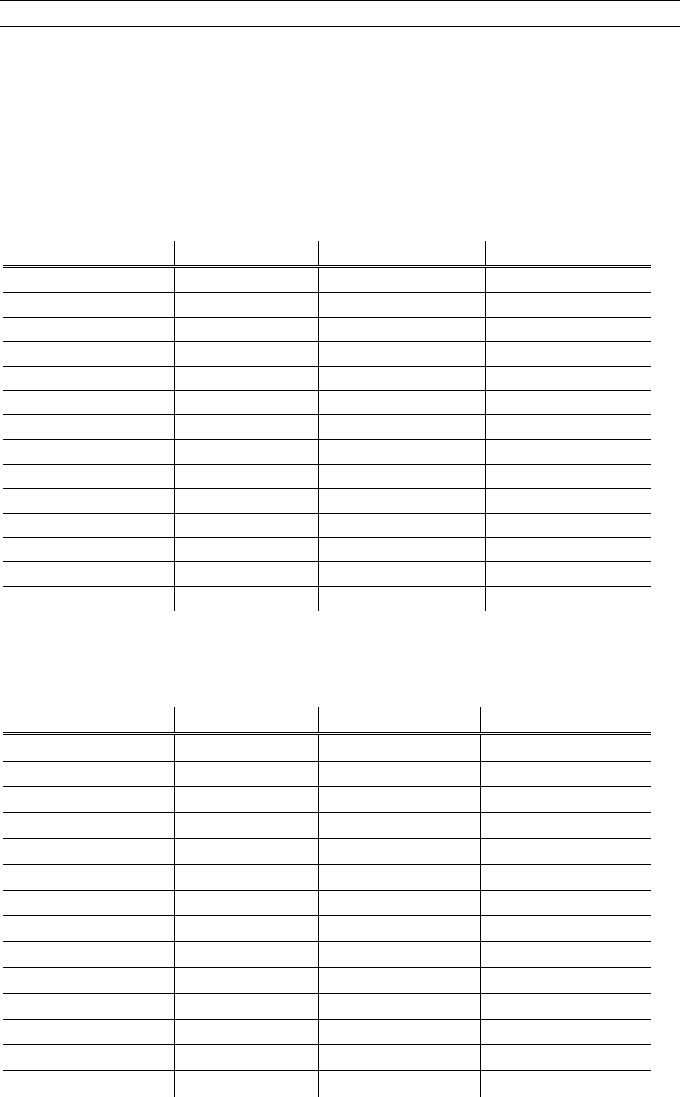
2014] PERMA 197
A
PPENDIX
2: B
REAKDOWN
OF
HTTP
S
TATUS
C
ODES
BY
J
OURNAL
HRJ
Code Frequency Percentage Cumulative
200 1,412 59.88 59.88
404 736 31.21 91.09
OPEN 150 6.36 97.46
403 21 0.89 98.35
400 11 0.47 98.81
500 11 0.47 99.28
302 4 0.17 99.45
502 3 0.13 99.58
UNKNOWN 3 0.13 99.7
303 2 0.08 99.79
401 2 0.08 99.87
410 2 0.08 99.96
415 1 0.04 100
To t al 2,358 100
HLR
Code Frequency Percentage Cumulative
200 3,855 65.22 65.22
404 1,543 26.1 91.32
OPEN 362 6.12 97.45
403 78 1.32 98.77
400 23 0.39 99.15
500 23 0.39 99.54
302 10 0.17 99.71
UNKNOWN 6 0.1 99.81
410 5 0.08 99.9
301 2 0.03 99.93
401 2 0.03 99.97
300 1 0.02 99.98
503 1 0.02 100
To t al 5,911 100
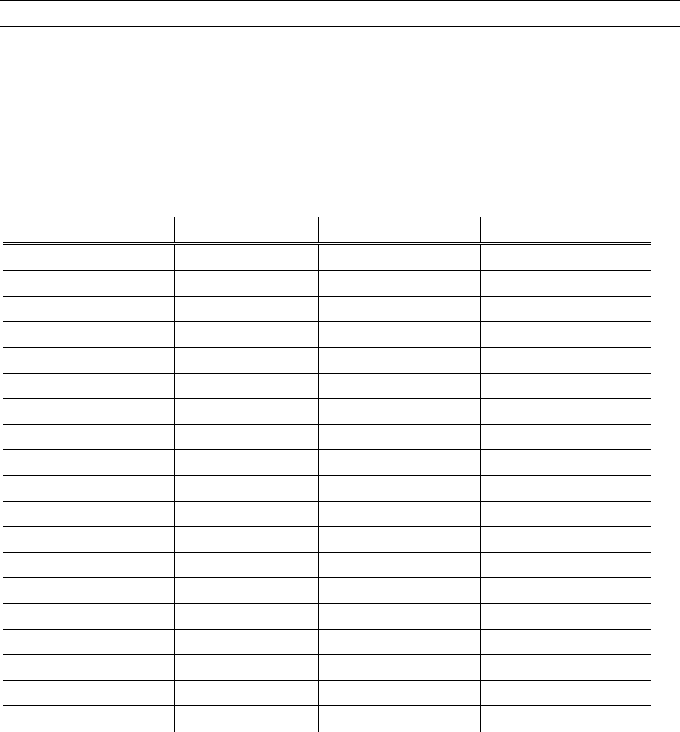
198 HARVARD LAW REVIEW FORUM [Vol. 127:176
JOLT
Code Frequency Percentage Cumulative
200 3,627 66.82 66.82
404 1,190 21.92 88.74
OPEN 377 6.95 95.69
403 177 3.26 98.95
500 15 0.28 99.23
400 8 0.15 99.37
302 5 0.09 99.47
410 5 0.09 99.56
503 5 0.09 99.65
401 4 0.07 99.72
UNKNOWN 4 0.07 99.8
300 3 0.06 99.85
400 8 0.15 99.37
301 3 0.06 99.91
415 2 0.04 99.94
303 1 0.02 99.96
416 1 0.02 99.98
502 1 0.02 100
To t al 5,428 100
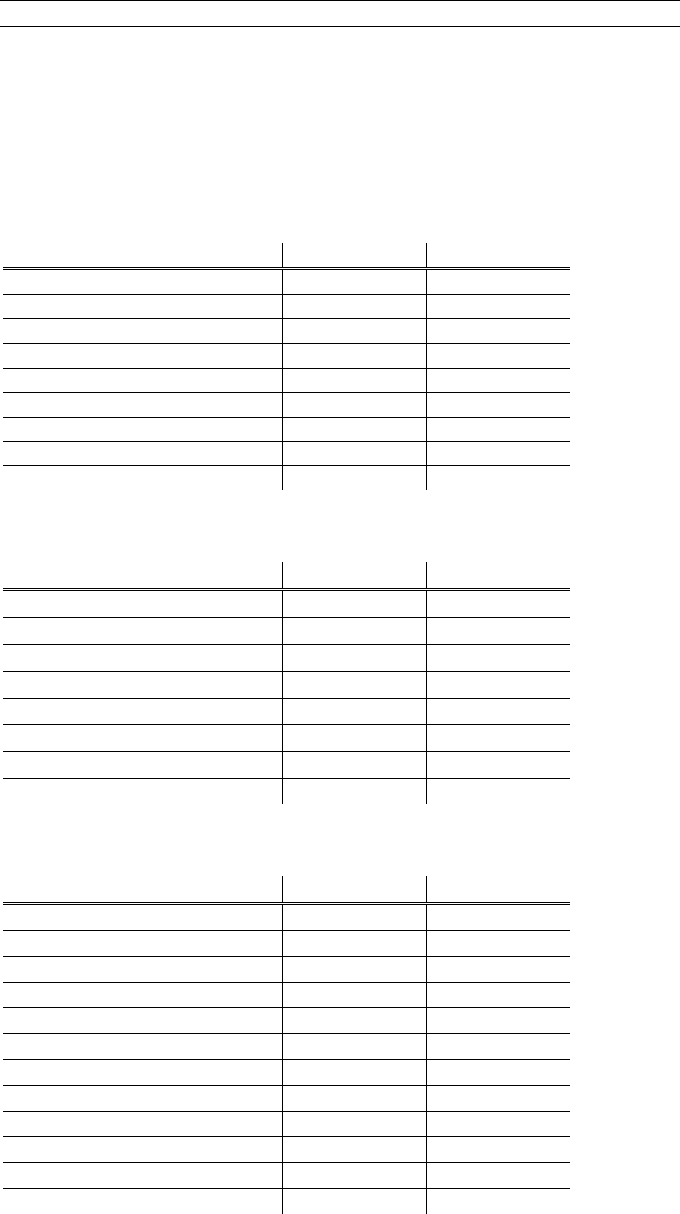
2014] PERMA 199
A
PPENDIX
3: B
REAKDOWN
OF
200 S
TATUS
C
ODE
T
AGS
BY
J
OURNAL
HRJ
Tag Frequency Percentage
200–Working 195 64.36
200–Redirect 67 22.11
200–Custom 404 22 7.26
200–Blank Page 8 2.64
200–Domain for Sale 4 1.32
200–Assorted Error 3 0.99
200–Archived 2 0.66
200–Paywall 2 0.66
To t al 303
HLR
Tag Frequency
Percentage
200–Working 237
67.71
200–Redirect 49
14.00
200–Custom 404 39
11.14
200–Working (updated) 22
6.29
200–Domain for Sale 2
0.57
200–Unclear 1
0.29
200–Paywall 1
0.29
To t al 350
JOLT
Tag Frequency
Percentage
200–Working 228
65.52
200–Redirect 53
15.23
200–Custom 404 28
8.05
200–Working (updated) 27
7.76
200–Blank Page 4
1.15
200–Domain for Sale 2
0.57
200–DNS Lookup Failed 2
0.57
200–Archived 1
0.29
200–500 Error 1
0.29
200–Forbidden 1
0.29
200–Paywall 1
0.29
To t al 348
